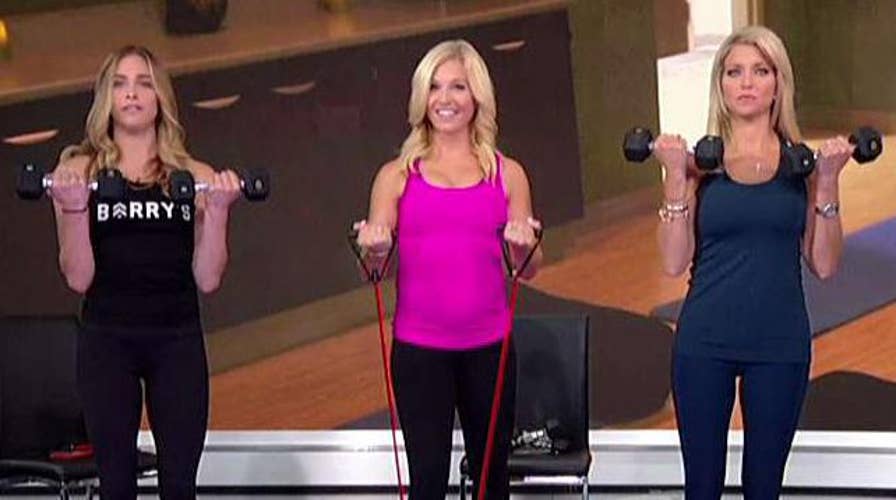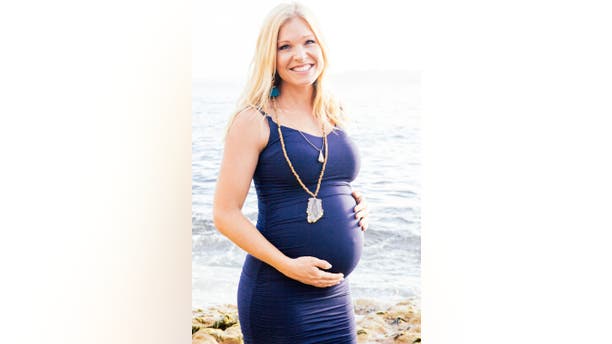"I'll have bacon, eggs, and a side of PLACENTA, please!" Wait, what's going on here? What world are we living in?
I recently got into a funny television exchange about placenta encapsulation (steaming, drying, and consuming the placenta in a vitamin-like pill form) while guest-hosting my favorite Australian morning show, “Studio Ten.”
The topic of eating placentas came up during the commercial break, and given the hosts' intrigue with the concept, it was worked into our hot topics of the morning. Although not particularly common, each of the hosts had heard of the practice and all had different ideas on how the placenta could be consumed. Raw? Fried in a pan with your breakfast? Baked like a brisket? Lollipops? Combined in a smoothie? Dried and encapsulated?
Most mammal moms eat their placentas after giving birth. But does that really mean humans should be doing it too? Most other mammals also don't go to college, live in air-conditioned homes, or drive cars to work.
But for all the naysayers, I've had a couple friends tell me they ate their placenta after childbirth, and highly recommend it. The reasoning? It is believed by some to carry a whole host of benefits such as assisting with milk production for the all-important breastfeeding. Some say it also helps keep away postpartum depression.
The minimal scientific studies that have been done seem to be inconclusive as to the benefits, but that doesn't stop women from raving about it. A large amount of information I have found comes from published anecdotes from women who have consumed their placentas post-childbirth and are true believers.
These women says eating the placenta – in a variety of forms – helped their ability to breastfeed and bond with their newborn, decreased blood loss, and improved mood and energy levels. On the flip side, many medical minds are skeptical, and strongly warn against it if the mother has an infection.
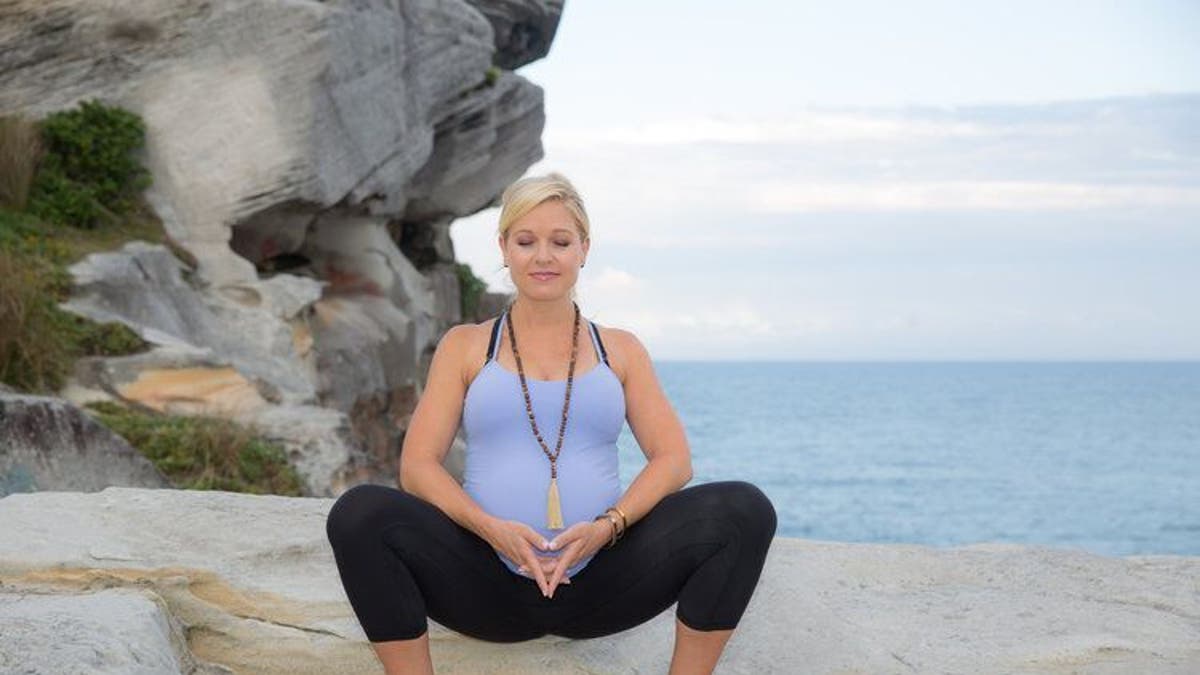
(Kath McLean’s Bright Photography)
So, should I eat my placenta!? I can't say it's a question I thought would be coming up a few days before I go into labor with my baby boy.
Although the concept may sound quite out there, I am open to trying alternative practices, as long as reputable doctors (including my trusted OBGYN) don't think there is potential harm.
My baby boy is due any day now, so if this is something I'm going to try, I need to know it is safe, and I need to make sure a highly regarded placenta specialist is available.
As part of my research, below you will find interviews I've done with Dr. Jill Gamberg, a general physician from Bondi Doctors and Georgie Jhet, a doula (someone who assists women during labor and after childbirth) who specializes in placenta encapsulation (recommended by my acupuncturist). If you are considering this practice, make sure you consult with your doctor first.
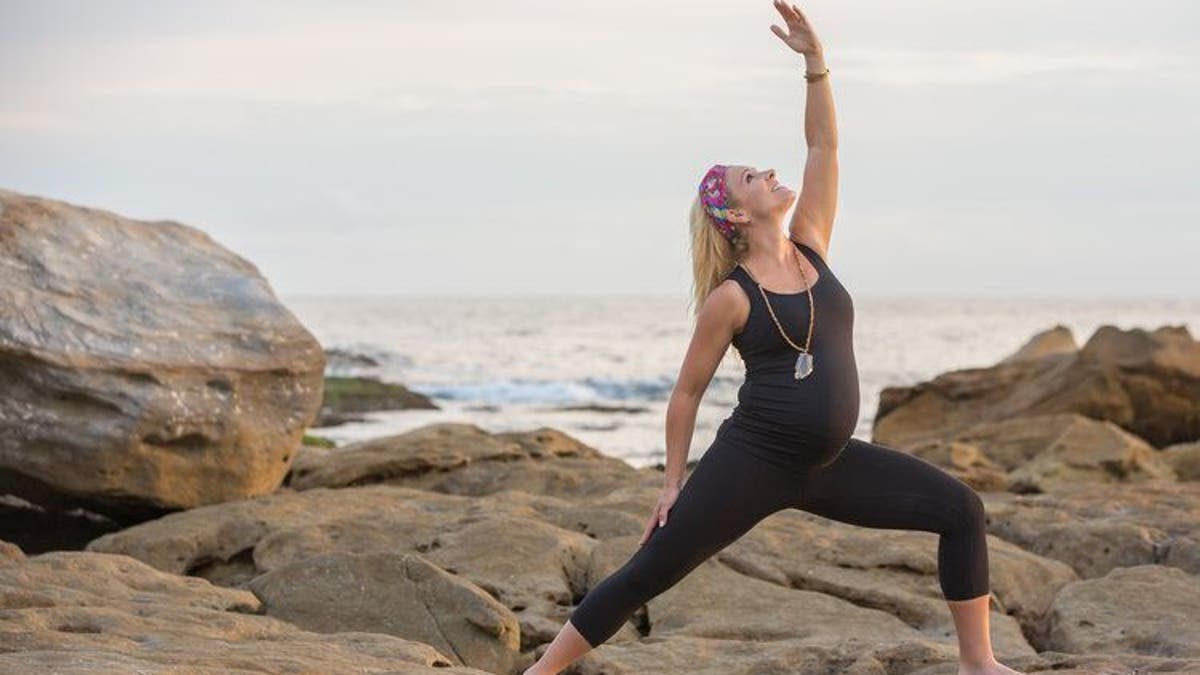
(Kath McLean’s Bright Photography)
Ladies! Check out the full Q&A's below and let me know what you think.
Is this too weird? Or is it something that will become mainstream down the track? Be sure to comment on my Instagram, Facebook, Twiter and YouTube pages.
Q&A with Dr. Jill Gamberg (physician)
Anna: What does the placenta do?
Dr. Jill Gamberg: The placenta is the organ that is inside the womb with the developing baby for exchange of nutrients, blood and waste. It is expelled from the womb after birth.
Anna: Do most mammals eat their placenta?
Dr. Gamberg: Most mammals do eat their placentas after birth fresh (with a few exceptions, including humans), and this practice has a few benefits. It may replenish nutrients that have been lost during pregnancy and birth, and also hides the smell of birth from potential predators in nature. It is a survival mechanism.
Anna: Is eating your placenta becoming more common?
Dr. Gamberg: The practice is gaining popularity. Before the 1970s, it was used occasionally in traditional Chinese medicine to treat a host of ailments in men and women. Most contemporary consumers have their placentas encapsulated into a vitamin-like pill before ingesting it.
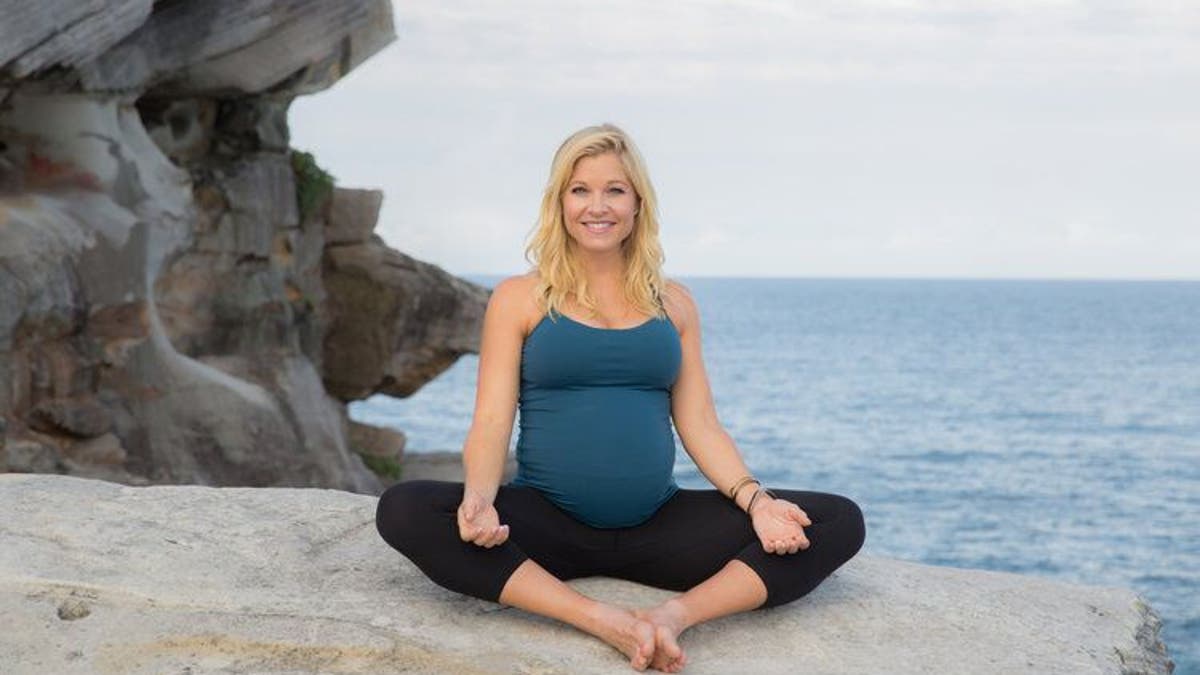
(Kath McLean’s Bright Photography)
Anna: What are the positive aspects of a new mother eating her placenta?
Dr. Gamberg: Placentas are packed with nutrients such as iron, protein and vitamins. According to the believers, mothers who eat their placentas have improved mood, energy levels, hormones levels and bonding with their infant. These claims have yet to be proven. The heating and dehydration process may impair the effectiveness of the nutrients.
Anna: What would happen if the mother has an infection?
Dr. Gamberg: A potential risk is that placentas may contain infection that may harm baby or mother. We do not know if the encapsulation process kills all bacteria. Another risk is that because the placenta removes waste products from the developing baby, we do not know if these products remain in the placenta after it has been processed into capsules.
Anna: What is the best way to consume it? Smoothie? Encapsulated? Etc.?
Dr. Gamberg: In terms of benefits, theoretically it would be best to eat it fresh, right after delivery. BUT this is definitely NOT recommended. Probably the safest way is to have it prepared by a reputable provider – who steams it, heats it to an appropriate temperature, dehydrates it and makes it into capsules.
Anna: Do you think this is a trend that will catch on?
Dr. Gamberg: The practice is not commonplace, but it is certainly becoming more popular as some of the biggest celebrities have reported eating their placentas in the past few years. I am not too sure it will catch on, as the jury is still out as to whether eating your placenta has any positive effects at all.
Q&A with Georgie Jhet (doula, childbirth educator, and Tree of Life placenta specialist)
Anna: What are the pros of eating your placenta?
Georgie: Placenta encapsulation may:
- Significantly reduce post-birth bleeding.
- Encourage a quick and healthy milk supply – some of my clients weren’t able to breastfeed before and they have been able to after taking the capsules.
- Benefit caesarean Mum’s in particular for milk production and healing.
- Replenish essential hormones such as oxytocin and CRH (stress reducer hormone).
- Replenish essential nutrients such as Vitamin B6 and iron.
- Prevent the baby blues and postnatal depression.
- Leave new mothers feeling calmer.
- Give new mums the energy to cope with caring for a newborn.
Anna: What are the cons of eating your placenta?
Georgie:
- Apart from my point (detailed below) about blood-borne diseases or smoking, the only time a placenta can’t be consumed is if there may be signs of an infection – usually Mum has developed a fever in labor – the placenta would be sent to pathology for testing in this case and it would not be able to be used after.
- If there is meconium in the waters or on the placenta on delivery, it can still be used 99 percent of the time, I would just ensure the TCM method is used. I have only had two occasions in four years where the meconium was so thick that it was not able to be done – usually it is runny and quite clear.
- Once again, I please ask anyone who is contemplating having their placenta made into remedies after birth to please do your homework to ensure your encapsulator is verified & trained properly (particularly face to face like mine with IPEN) – we are dealing with your blood here, you want to make sure there is no chance of contamination between clients
Anna: Is it safe to eat my placenta?
Georgie: More times than not it is very safe to eat your own placenta after the birth of your little one. There are a few health issues where it should be avoided, for example, if the mother is a smoker or has a blood-borne disease like HIV or Hep, etc. Please ensure your encapsulator has been trained by a reputable organization and also has their Food Safety Hygiene & Bloodborne Pathogen Training Certificates.
Anna: How does the process work?
Georgie: When Mums are in labor, they send me a text to give me a heads up and another (or call) once the placenta is ready for collection. I then send back my ETA as soon as I see the message – usually I’m there within an hour or two at the most.
I ask all my clients to have a midwife supply a bag of ice to go in the container – this keeps the placenta chilled for up to 6 hours. If my client has birthed late at night or early morning and it will be longer than 6 hours until collection with take place, they just need to get the container into a fridge and I can liaise with their partner in the morning regarding collection.
Once I pick it up I take the placenta home to wash, then cut up and place in the dehydrator for Raw capsules or steam it first, then cut then into the dehydrator for the TCM – Traditional Chinese Method.
I guarantee an expert overnight service where I deliver the capsules the very next day – unless I am called to a client’s birth as a doula.
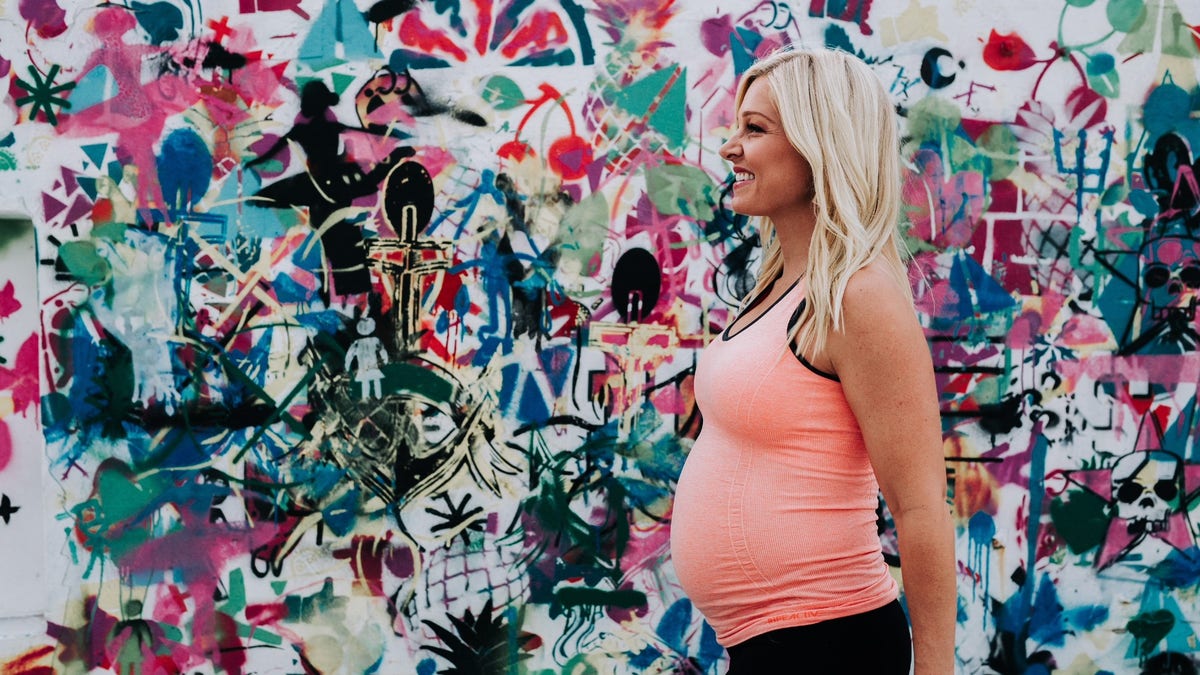
(Emma Wand Photography)
Anna: Do most mammals eat their placenta?
Georgie: Turns out, almost every other mammal does – herbivores and carnivores alike. Most mammals go out of their way to consume their placenta with great enthusiasm after the birth of their baby, frequently taking hours to do so. They sometimes even delay caring for the baby to satisfy this instinctual need.
I’ve heard it argued that animals do this to clean their nest sites, in an effort to avoid predators, but this is not true. Even top predators like lions, tigers, and bears who have no one to fear, eat their placentas. Animals like deer and giraffes, whose young can get up immediately and walk away, also eat their placentas rather than just moving away from the nest site. They do not bother to clean up the blood and other fluids left from the birth.
If not for cleanliness or safety, then why are mammals consuming their afterbirth? Placentophagy -- eating one’s own afterbirth -- must have some other evolutionary purpose.
Anna: Is eating your placenta becoming more common?
Georgie: I trained four years ago and have seen steady growth in the industry with more and more women hearing about the benefits from celebrities and other Mums – Facebook has made it very easy for women to discuss their experiences with each other, which has definitely created an increase in the number of women choosing to honor their placenta in this way.
Anna: What is the best way to eat it? Smoothie? Encapsulated? Etc.?
Georgie: I have 4 remedies that I have chosen to make for my clients and each of them has their own purpose.
Smoothie – this is a great way to kick-start your recovery as a small piece of fresh placenta is used in a smoothie with frozen banana and berries and delivered hours after collection – my Mums love their smoothies and they feel amazing within an hour or two!
Capsules – this is still the most popular way of ingesting the placenta and I guarantee expert overnight service with delivery more often than not by lunch time the day after collection
Mother Essence – this is the only remedy that can be given to the baby directly – and can be used by Mum too. It is a liquid that is further diluted with water. Great for times of distress – just think of baby red-faced, clench fists crying – can’t calm them down – is especially great for teething.
Tincture – the tincture is a fantastic way of keeping the benefits of your placenta long-term – when you have your placenta encapsulated you get a finite number of capsules then once they are gone, that’s it. Some Mums can feel rather anxious about finishing their pills – having the tincture (which has all the same benefits) means that they can keep using something when they feel the need to and can last a very long time. It really is a great back-up at less than a third of the price of the capsules.

(Emma Wand Photography)
Anna: What does it taste like?
Georgie: The smoothie just tastes like fruit and the capsules are taken with food so you won’t taste a thing. With the tincture and essence they are brandy-based but as the dilution is high, you won’t taste them at all.
Anna: What would happen if someone else ate my placenta? Is it safe?
Georgie: Generally it is not safe due to possible health issues being passed on from one person to another – we are talking about blood here. This is something that my clients can decide to do themselves, I don’t recommend them to do so. I've had mothers of mothers take the capsules and fathers have caps and smoothies. I told them all that I can't tell them that it is OK, they can do what they like after I hand them over, but that professionally I cannot tell them it is safe to do so.
Anna: How much does it cost in Aussie Dollars?
Georgie:
- Smoothie - $80
- Capsules – TCM or RAW - $300
- Tincture - $100
- Mother Essence - $50
Anna: How many days does the supply typically last and how often do new moms take it? Daily?
Georgie: The number of capsules you get depends on the size of the baby – a big baby typically means a big placenta. For example, the smallest placenta I have had made 70 capsules (tiny) and the largest was 320 which was from a 4.7kg baby!
I start my Mums on four a day – two in the middle of breakfast and two in the middle of lunch – depending on how many capsules they had to start with. I give them a guideline of how to taper the dose down to one a day. Typically I tell them to take one less capsule a day every two weeks or so. I also talk to my Mums about listening to their bodies – if they feel like they need more energy for example, they can safely take more, it won’t harm them in any way.
Anna: Do you think this is a trend that will catch on more in the future?
Georgie: I think that with more and more women trying it, it can only grow in the future. Of course there are always articles being posted to condemn the industry (as we all know drama sells), but a multitude of women can’t be wrong about the benefits they have seen from personal experience and we love to share the love with others.
Anna: Why did you decide to start offering this placenta consuming service for new moms?
Georgie: I didn’t have the best start with my motherhood journey … my first pregnancy developed complications from 13 weeks and our pregnancy needed to be terminated due to major fetal abnormalities at 23 weeks.
During those 10 weeks I grieved about testing that could lead to miscarriage, possible Downs Syndrome and then when we got the all clear, we thought we could finally enjoy the pregnancy until scans at 19 weeks showed a couple of things amiss.
We then had another scan at 21 weeks and found out our little boy had complications showing in his heart, brain, mental retardation, rocker bottom feet and I was told I was a walking time bomb as I was the size of a full term pregnancy by 21 weeks (due to polyhydramnios).
I gave birth to our stillborn son Juniper on 1st June 2011. We had cancelled all of our childbirth education as we knew it was not going to be the beautiful water birth experience I had longed for. This experience really cemented the dream of supporting other Mums and couples through their birthing journeys and I started my doula training in October that year.
Due to my training, I knew the amazing benefits of placenta encapsulation, so when I found out I was pregnant just before I finished my training I knew it was something I wanted to do. I booked a homebirth but after a long labor of standing on my feet for 2 days I ended up transferring to hospital for some help but still managed to have a vaginal birth.
My midwife would not encapsulate my placenta due to meconium. Unfortunately, when I did my placenta encapsulation training with IPEN I found out that the placenta could have been used still.
I suffered greatly with postnatal depression for around two years and it took me a long time to bounce back – years actually. I never wanted another woman to go through what I went through so started offering placenta encapsulation just over four years ago and I love hearing how it helps new Mums.
I have travelled the world since my daughter’s birth in order to train with Anni Daulter of Sacred Pregnancy in running women’s birthing circles and couples classes as well as sacred doula and sister circles and I truly believe my passion for all things birthing and postpartum has grown dramatically through my participation in these retreats.
I am so honored to have learnt from my own personal experiences and can share my knowledge and skills with others in order to give them the best start in their birthing and parenthood journeys.
